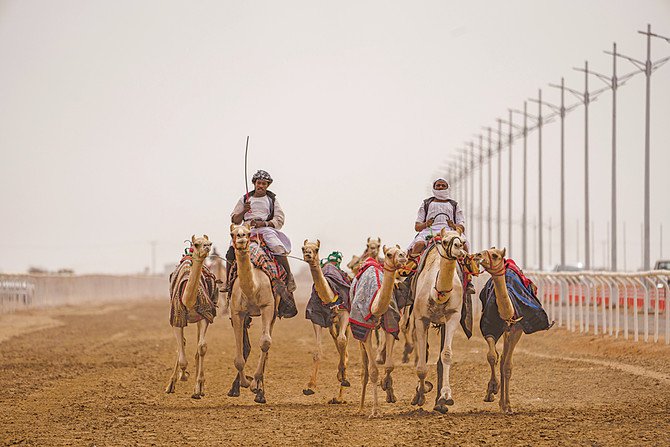
And they’re off! Crown Prince Camel Festival starts in Taif
The first warm-ups of the inaugural Crown Prince Camel Festival started in Taif in the early hours of Saturday, with thousands of camels on a two-kilometer, high-tech track. But that was just a start: Under the patronage of Crown Prince Mohammed bin Salman, more than 10,000 camels will be thrown in the ring over the next 42 days in the hopes of winning millions in prize money for special breed, good looks and speed.
Business leaders, politicians and camel enthusiasts from the Gulf states and other Arab countries will head to one of the Middle East’s largest displays of the finest camels in Saudi Arabia and the world. It is considered the strongest of its kind in the region in terms of size and value of the prizes, with SR45 million ($12 million) on offer.
It is also the largest camel race in terms of the number of rounds, with a total of 781, including 308 first warm-up rounds, 20 production runs, two camel marathon rounds, 278 second warm-up rounds and 173 rounds in the final. This puts the festival firmly on top of the annual fixtures that celebrate Saudi culture, sport and the value of its age-old animal, the camel.
In Saudi Arabia today, camels are celebrated for their beauty, grace and speed. Even as the country rapidly modernizes, the animals remain a central part of Saudi culture, and a lucrative one, with camel prices reaching hundreds of thousands of dollars and even breaking the $1 million mark.
The festival aims to enhance the camel heritage in Saudi, Arab and Islamic culture. With that in mind, it will feature sport, cultural and entertainment activities alongside educational workshops for camel owners and visitors interested in camel sports.
“Camel racing is a culture we have inherited from our ancestors,” Hussein bin Saud, a camel owner, told Arab News. “We used to participate in small regional competitions, sometimes without financial prizes, just for tribal and regional reputation. However, over the years, these competitions became popular in the Gulf countries and the competition became more enthusiastic. Countries started to organize and support these competitions with financial prizes.”


























